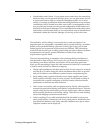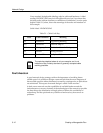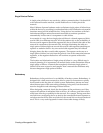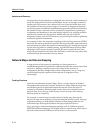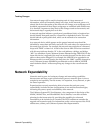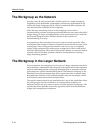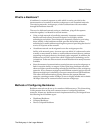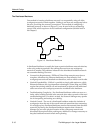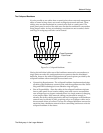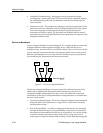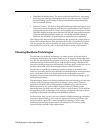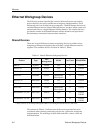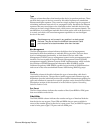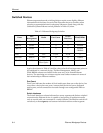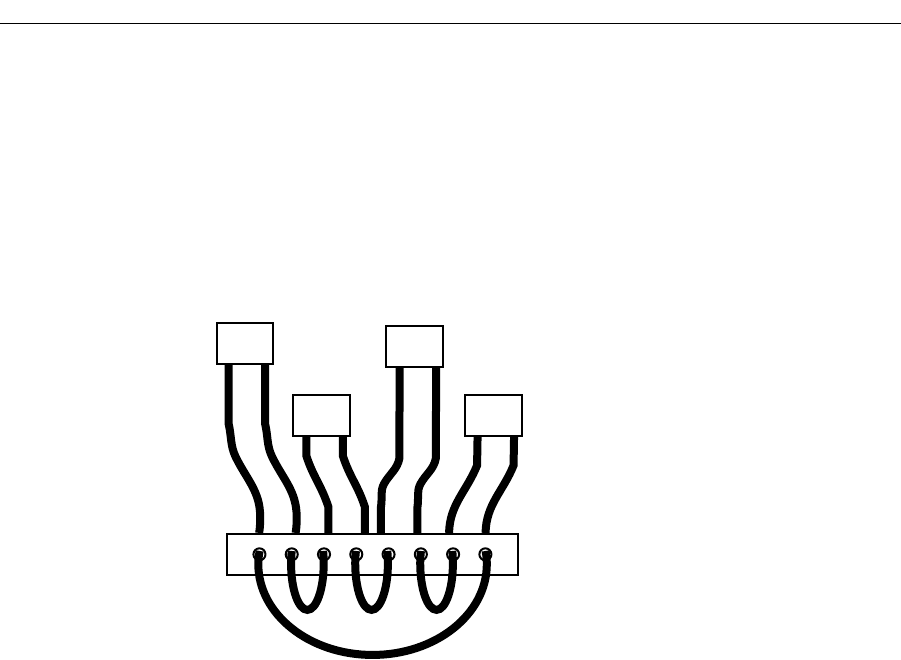
The Workgroup in the Larger Network 5-19
Network Design
The Collapsed Backbone
It is also possible to run cables from a central point, often a network management
office or central wiring closet, out to each workgroup network and back. These
cabling runs are then terminated at a central point such as a patch panel. The
patch panel ports for each of the cable runs can then be connected to one another
using jumper cables. As long as technology restrictions are not exceeded, chains
and rings of workgroup networks can be created.
Figure 5-6. Collapsed Backbone
Having the individual cable runs of the backbone connected to one another at a
single point can make this configuration more expensive than the distributed
backbone, however the added configuration and control options provided by the
collapsed backbone often outweighs the associated costs.
• Connectivity Requirements - The collapsed backbone implementation brings
all cables of the backbone to a central point, and the requirements of the Token
Ring and FDDI technologies for an unbroken ring still apply.
• Ease of Expandability - Since the cables of the collapsed backbone originate
from a patch panel in one location, adding new cable runs to accommodate
new workgroups or to bypass outmoded ones is a simple matter of changing
a few jumper cables. If the network cabling was planned far enough in
advance, the facility cabling required to add new workgroups to the backbone
network may be already in place, requiring only a set of jumper cables and a
short amount of time to connect. The use of a collapsed backbone can ease the
transition from a backbone network with no controlling hardware to a device
collapsed backbone in the future.
hub
hub
hub
hub
Cross-Connected
Patch Panel
2094n11



